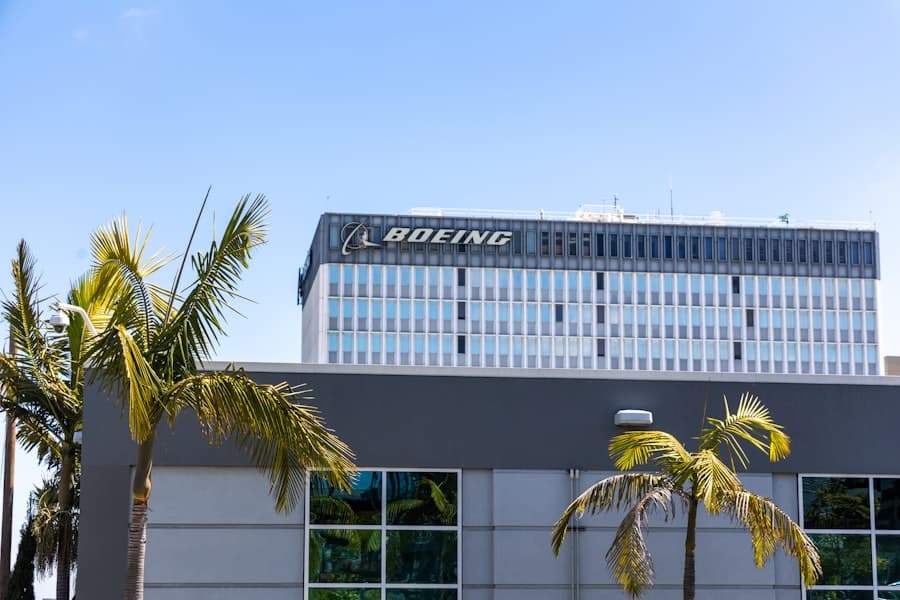The pursuit of hypersonic flight, defined as travel at speeds exceeding Mach 5, has ignited a fierce competition among nations and private enterprises alike. This race is not merely about achieving unprecedented speeds; it encompasses strategic military advantages, commercial opportunities, and the potential for revolutionary advancements in global transportation. Countries such as the United States, China, and Russia are heavily investing in hypersonic technologies, recognizing that mastery over this domain could redefine power dynamics and economic landscapes.
The implications of hypersonic flight extend beyond mere speed; they touch on national security, global trade, and even the future of space exploration. In the military arena, hypersonic weapons are at the forefront of this race. These systems promise to outpace traditional missile defense mechanisms, making them a formidable asset in modern warfare.
For instance, the U.S. Department of Defense has allocated significant resources to develop hypersonic glide vehicles and scramjet-powered missiles, aiming to enhance deterrence capabilities. Meanwhile, China has demonstrated its prowess with successful tests of hypersonic missiles that can maneuver unpredictably, complicating interception efforts.
The commercial sector is also keenly interested in hypersonic travel, with companies like Virgin Galactic and SpaceX exploring the potential for passenger flights that could drastically reduce travel times across the globe. The convergence of military and commercial interests in hypersonic technology underscores its significance in shaping the future of aerospace.
Key Takeaways
- Hypersonic flight is a race among countries and companies to develop aircraft that can travel at speeds greater than Mach 5.
- The challenges of hypersonic flight include extreme temperatures, aerodynamic instability, and material limitations.
- Aerospace engineering plays a crucial role in the development of hypersonic flight technology, from designing airframes to developing propulsion systems.
- Advancements in materials and manufacturing techniques are essential for creating components that can withstand the extreme conditions of hypersonic flight.
- Aerodynamics is of utmost importance in hypersonic flight, as the behavior of air around the aircraft at such high speeds is critical for stability and control.
The Challenges of Hypersonic Flight
Despite the tantalizing prospects of hypersonic flight, numerous challenges must be addressed before these technologies can be fully realized. One of the most pressing issues is the extreme thermal environment encountered at hypersonic speeds.
This extreme thermal load poses a significant risk to structural integrity and requires innovative solutions in thermal protection systems. Engineers must develop materials and designs capable of withstanding these conditions without compromising performance or safety. Another critical challenge lies in the aerodynamic stability of hypersonic vehicles.
At such high speeds, airflow behaves differently than at subsonic or supersonic speeds, leading to complex shockwave interactions and potential instability. The design of hypersonic vehicles must account for these aerodynamic phenomena to ensure controlled flight. Additionally, the control systems used to navigate these vehicles must be highly sophisticated, capable of responding to rapid changes in airflow and maintaining stability under extreme conditions.
The interplay between thermal management, structural integrity, and aerodynamic stability presents a multifaceted challenge that requires interdisciplinary collaboration among engineers, scientists, and researchers.
The Role of Aerospace Engineering in Hypersonic Flight

Aerospace engineering plays a pivotal role in advancing hypersonic flight technologies. This field encompasses a wide range of disciplines, including fluid dynamics, materials science, propulsion systems, and structural engineering. Aerospace engineers are tasked with designing vehicles that can withstand the rigors of hypersonic travel while optimizing performance and efficiency.
Their work involves extensive research and development to create innovative solutions that address the unique challenges posed by hypersonic speeds. One significant area of focus for aerospace engineers is the development of advanced computational models that simulate hypersonic flight conditions. These models allow engineers to predict how vehicles will behave under various scenarios, enabling them to refine designs before physical prototypes are built.
Additionally, aerospace engineers collaborate with materials scientists to identify and develop new materials that can endure extreme temperatures and pressures encountered during hypersonic flight. This interdisciplinary approach is essential for overcoming the technical hurdles associated with hypersonic travel and ensuring that designs are both feasible and effective.
Advancements in Materials and Manufacturing for Hypersonic Flight
The quest for materials capable of withstanding the extreme conditions of hypersonic flight has led to significant advancements in materials science and manufacturing techniques. Traditional materials such as aluminum and titanium are often inadequate for hypersonic applications due to their limited thermal resistance. As a result, researchers are exploring advanced composites and ceramics that can endure high temperatures while maintaining structural integrity.
For instance, carbon-carbon composites have emerged as promising candidates due to their exceptional thermal properties and lightweight characteristics. In addition to material innovations, advancements in manufacturing processes are crucial for producing components that meet the stringent requirements of hypersonic flight. Additive manufacturing, or 3D printing, has gained traction in aerospace applications due to its ability to create complex geometries that would be challenging or impossible to achieve through traditional machining methods.
This technology allows for rapid prototyping and customization of components, enabling engineers to iterate designs quickly and efficiently. Furthermore, advancements in automated manufacturing techniques enhance precision and reduce production times, making it feasible to produce hypersonic vehicles at scale.
The Importance of Aerodynamics in Hypersonic Flight
Aerodynamics plays a critical role in the design and performance of hypersonic vehicles. At speeds exceeding Mach 5, the behavior of air around an aircraft becomes increasingly complex due to shockwaves and compressibility effects. Understanding these aerodynamic phenomena is essential for optimizing vehicle shapes to minimize drag and maximize stability during flight.
Engineers must carefully consider factors such as lift-to-drag ratios and shockwave interactions when designing hypersonic vehicles. One approach to improving aerodynamic performance is through the use of computational fluid dynamics (CFD) simulations. These simulations allow engineers to visualize airflow patterns around a vehicle and identify areas where drag can be reduced or stability enhanced.
Additionally, wind tunnel testing remains a vital tool for validating aerodynamic models and assessing vehicle performance under controlled conditions. By combining advanced simulations with experimental data, engineers can refine their designs to achieve optimal aerodynamic efficiency at hypersonic speeds.
Propulsion Systems for Hypersonic Flight

The propulsion systems used in hypersonic flight are among the most critical components influencing vehicle performance and efficiency. Traditional jet engines are inadequate for hypersonic speeds; therefore, researchers are exploring advanced propulsion technologies such as scramjets (supersonic combustion ramjets) and rocket-based combined cycle engines.
The development of these advanced propulsion systems presents unique challenges as well. For instance, scramjets require precise control over fuel injection and combustion processes to maintain stable operation at high speeds. Additionally, engineers must address issues related to thermal management within the engine itself, as extreme temperatures can affect performance and longevity.
Ongoing research into alternative fuels and hybrid propulsion systems aims to enhance efficiency while reducing environmental impact, further complicating the design landscape for hypersonic vehicles.
Testing and Simulation for Hypersonic Flight
Testing and simulation are integral components of developing hypersonic flight technologies. Given the high costs associated with building physical prototypes capable of sustained hypersonic flight, simulation tools have become indispensable for engineers seeking to validate their designs before moving into production phases. High-fidelity computational models enable researchers to simulate various flight scenarios, assess vehicle performance under different conditions, and identify potential failure points.
Wind tunnel testing remains a cornerstone of hypersonic research despite advancements in simulation technology. Facilities capable of replicating hypersonic conditions provide invaluable data on aerodynamic performance and thermal loads experienced by vehicles during flight. These tests help validate computational models while offering insights into real-world behavior that simulations may not fully capture.
The combination of rigorous testing protocols with advanced simulation techniques ensures that engineers can develop safe and effective hypersonic vehicles ready for operational deployment.
The Future of Hypersonic Flight and Aerospace Engineering
The future of hypersonic flight holds immense promise as technological advancements continue to unfold across various domains within aerospace engineering. As nations invest heavily in research and development initiatives aimed at achieving operational hypersonic capabilities, we can expect significant breakthroughs that will reshape transportation paradigms globally. The potential for rapid intercontinental travel could revolutionize commercial aviation by drastically reducing flight times from hours to mere minutes.
Moreover, advancements in hypersonic technologies may pave the way for new applications beyond traditional aviation contexts. For instance, space exploration missions could benefit from hypersonic vehicles capable of reaching low Earth orbit more efficiently than current launch systems allow. Additionally, military applications will likely expand as nations seek to leverage hypersonic capabilities for strategic advantages on the battlefield.
As we look ahead, collaboration among governments, private enterprises, and academic institutions will be essential in driving innovation within this field. By fostering partnerships that bring together diverse expertise—from materials science to propulsion engineering—stakeholders can accelerate progress toward realizing the full potential of hypersonic flight while addressing safety concerns associated with these cutting-edge technologies. The race for hypersonic flight is not merely about speed; it represents a transformative shift in how we conceive transportation and defense strategies in an increasingly interconnected world.
In the realm of cutting-edge technology, the advancements in aerospace engineering are not only propelling hypersonic flight but also influencing other sectors, such as digital content optimization. An interesting parallel can be drawn with the article on how to boost your content with NeuronWriter SEO NLP optimization. Just as aerospace engineers are pushing the boundaries of speed and efficiency, content creators are leveraging advanced tools to enhance their digital presence. Both fields exemplify the integration of sophisticated technology to achieve unprecedented results, whether it’s in the skies or on the web.
FAQs
What is hypersonic flight?
Hypersonic flight is the ability to travel at speeds greater than five times the speed of sound, or Mach 5.
What is aerospace engineering’s role in hypersonic flight?
Aerospace engineering plays a crucial role in the development of hypersonic flight by designing and developing the necessary technologies, materials, and propulsion systems to achieve and sustain hypersonic speeds.
What are the challenges of hypersonic flight?
Challenges of hypersonic flight include managing extreme temperatures, developing materials that can withstand high heat and pressure, and designing aerodynamic shapes that can maintain stability at hypersonic speeds.
How is aerospace engineering addressing these challenges?
Aerospace engineers are addressing these challenges through the development of advanced thermal protection systems, innovative materials, and propulsion systems capable of sustaining hypersonic speeds.
What are the potential applications of hypersonic flight?
Potential applications of hypersonic flight include faster and more efficient air travel, military reconnaissance and strike capabilities, and space exploration missions.

